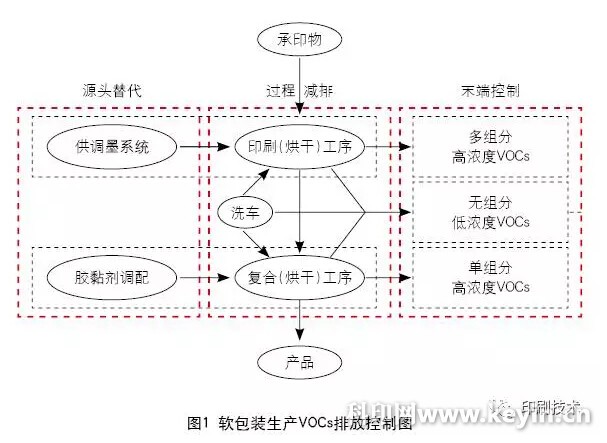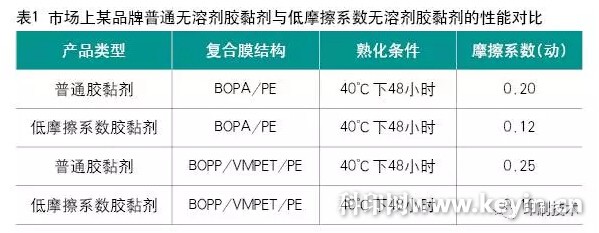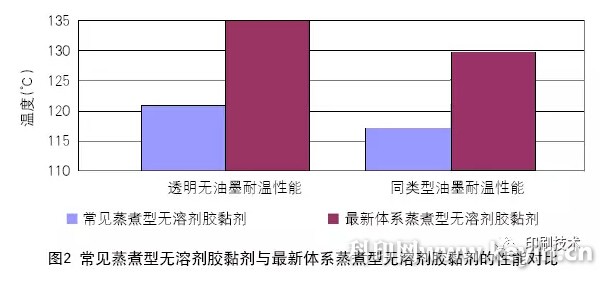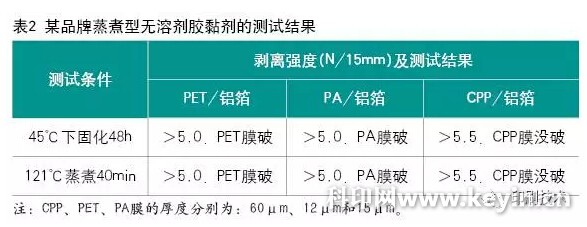The flexible packaging industry's emission reduction channels mainly include source substitution, process emission reduction and end control, as shown in Figure 1. Among them, the adhesive is one of the "protagonists" of the source replacement, and it is also the key control object for soft packaging enterprises to implement VOCs emission reduction.
Solvent-free adhesives have developed rapidly in recent years. They are present in 100% solid form and contain no volatile organic compounds. After years of promotion and application, the market share in the flexible packaging market is increasing.

Existing Problems
1. Appearance
Since solvent-free adhesives do not contain solvents, their current leveling properties are not as good as solvent-based adhesives, so appearance problems are particularly important when using solvent-free adhesives. Due to the low initial adhesion of solvent-free adhesives, problems such as “bubble†and “white spots†may occur when the machine is matured, but solvent-free adhesives have the characteristics of “secondary levelingâ€. During the curing process, the adhesive will continue to “flow†to the leveling state, so as long as the temperature and humidity of the late curing chamber are reasonably controlled, and the solvent-free adhesive with good leveling property is selected, the use requirements can be achieved.
2. Slippery
Slip and opening are mainly used when the inner layer is made of PE or CPP film (especially PE film), the friction coefficient of the non-bonded surface of PE or CPP film will increase, making it difficult to “open†after bag making. Reduce the production efficiency of the subsequent process. Currently, there are on the market to specifically address solvent-free adhesive systems and composite summer soft packaging material friction coefficient increases solution. For example, a low-friction coefficient solvent-free adhesive of a certain brand on the market can solve the problem of poor smoothness of the inner layer of PE or CPP film, and the performance of a common solvent-free adhesive of a certain brand on the market is as shown in Table 1. Show.

3. Resistant cooking
At present, the latest system of cooking-type solvent-free adhesives on the market not only has a great cost advantage over the original retort-type products, but also greatly improves the cooking performance of the original solvent-free adhesives and the compatibility with the inks. The performance comparison between the common cooking solvent-free adhesive and the latest system-cooking solvent-free adhesive is shown in Fig. 2.

4. Aluminum foil and aluminum foil cooking
Due to the different materials, the aluminum-plastic composite film requires different types of solvent-free adhesives to be bonded to the plastic composite film. At the same time, some composite film structures of aluminum foil composite RCPP also require high temperature cooking at 121 ° C for 40 min, which requires that the solvent-free adhesive has high adhesion to aluminum foil, otherwise the composite film will break.
At present, the solvent-free adhesive that can solve the aluminum foil and aluminum foil cooking composite film has been introduced on the market. The strength before cooking can reach 5-6N/15mm, and the strength after cooking can be kept at 4~5N/15mm until the composite film is damage. Table 2 shows the test results of a brand of cooking-type solvent-free adhesive.

Pvc Cling Film,Cling Film Food,Cling Film Roll,Pvc Food Wrap Film
DONGGUAN YEE HUP TRADING CO,.LTD , https://www.yeehupacks.com